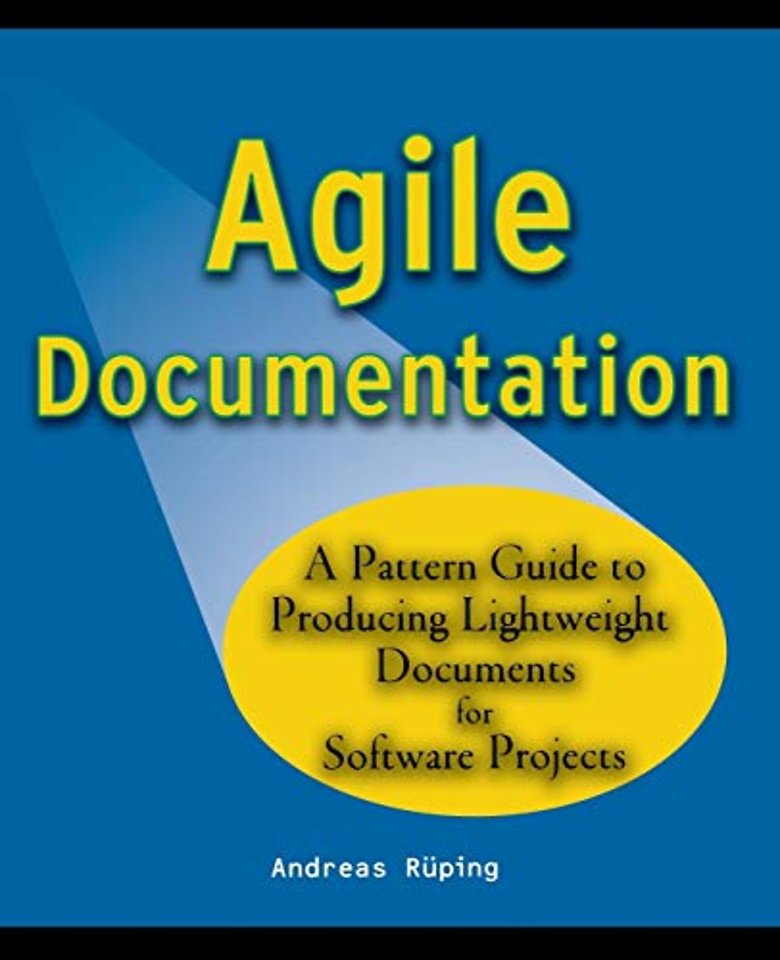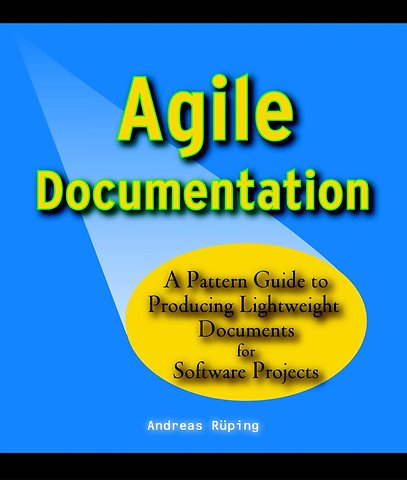Agile Documentation – A Pattern Guide to Producing Lightweight Documents for Software Projects
A Pattern Guide to Producing Lightweight Documents for Software Projects
Paperback Engels 2003 9780470856178Samenvatting
Software documentation forms the basis for all communication relating to a software project. To be truly effective and usable, it should be based on what needs to be known.
Agile Documentation provides sound advice on how to produce lean and lightweight software documentation. It will be welcomed by all project team members who want to cut out the fat from this time consuming task. Guidance given in pattern form, easily digested and cross–referenced, provides solutions to common problems.
Straightforward advice will help you to judge:
What details should be left in and what left out
When communication face–to–face would be better than paper or online
How to adapt the documentation process to the requirements of individual projects and build in change
How to organise documents and make them easily accessible
When to use diagrams rather than text
How to choose the right tools and techniques
How documentation impacts the customer
Better than offering pat answers or prescriptions, this book will help you to understand the elements and processes that can be found repeatedly in good project documentation and which can be shaped and designed to address your individual circumstance. The author uses real–world examples and utilises agile principles to provide an accessible, practical pattern–based guide which shows how to produce necessary and high quality documentation.
Specificaties
Lezersrecensies
Inhoudsopgave
<p>Preface xi</p>
<p>Acknowledgements xvii</p>
<p>Introduction 1</p>
<p>Project Background 11</p>
<p>1 Finding the Right Topics 19</p>
<p>Target Readers 24</p>
<p>Focused Information 26</p>
<p>Individual Documentation Requirements 28</p>
<p>Documentation Portfolio 30</p>
<p>Focus on Long–Term Relevance 34</p>
<p>Specification as a Joint Effort 36</p>
<p>Design Rationale 39</p>
<p>The Big Picture 40</p>
<p>Separation of Description and Evaluation 42</p>
<p>Realistic Examples 44</p>
<p>Experience Reports 46</p>
<p>2 Structuring Individual Documents 61</p>
<p>Structured Information 66</p>
<p>Judicious Diagrams 70</p>
<p>Unambiguous Tables 73</p>
<p>Guidelines for Readers 75</p>
<p>Thumbnail Sketches 77</p>
<p>Traceable References 78</p>
<p>Glossary 79</p>
<p>Document History 81</p>
<p>Experience Reports 82</p>
<p>3 Layout and Typography 93</p>
<p>Text on 50% of a Page 98</p>
<p>Two Alphabets per Line 100</p>
<p>120% Line Spacing 102</p>
<p>Two Typefaces 104</p>
<p>Careful Use of Type Variations 106</p>
<p>Careful Ruling and Shading 108</p>
<p>Adjacent Placement 109</p>
<p>Coherent Pages 111</p>
<p>Experience Reports 112</p>
<p>4 Infrastructure and Technical Organisation 117</p>
<p>Document Landscape 120</p>
<p>Document Archive 123</p>
<p>Wiki 125</p>
<p>Code–Comment Proximity 126</p>
<p>Reader–Friendly Media 128</p>
<p>Separation of Contents and Layout 131</p>
<p>Single Source and Multiple Targets 133</p>
<p>Import by Reference 136</p>
<p>Separation of Processing and Printing 138</p>
<p>Document Templates 139</p>
<p>Few Tools 142</p>
<p>Annotated Changes 144</p>
<p>Notification upon Update 145</p>
<p>Reorganisation upon Request 147</p>
<p>Experience Reports 149</p>
<p>5 Management and Quality Assurance 159</p>
<p>A Distinct Activity 161</p>
<p>One Responsible Author 164</p>
<p>Continuing Documentation 166</p>
<p>Writing and Reflection 168</p>
<p>Review Culture 170</p>
<p>Review Before Delivery 174</p>
<p>Customer Review 175</p>
<p>A Distant View 177</p>
<p>Information Marketplace 179</p>
<p>Knowledge Management 180</p>
<p>Experience Reports 182</p>
<p>Final Remarks 193</p>
<p>Pattern Thumbnails 197</p>
<p>Finding the Right Topics 197</p>
<p>Structuring Individual Documents 198</p>
<p>Layout and Typography 200</p>
<p>Infrastructure and Technical Organisation 201</p>
<p>Management and Quality Assurance 203</p>
<p>Glossary 205</p>
<p>References 211</p>
<p>Index 221</p>
Rubrieken
- advisering
- algemeen management
- coaching en trainen
- communicatie en media
- economie
- financieel management
- inkoop en logistiek
- internet en social media
- it-management / ict
- juridisch
- leiderschap
- marketing
- mens en maatschappij
- non-profit
- ondernemen
- organisatiekunde
- personal finance
- personeelsmanagement
- persoonlijke effectiviteit
- projectmanagement
- psychologie
- reclame en verkoop
- strategisch management
- verandermanagement
- werk en loopbaan

